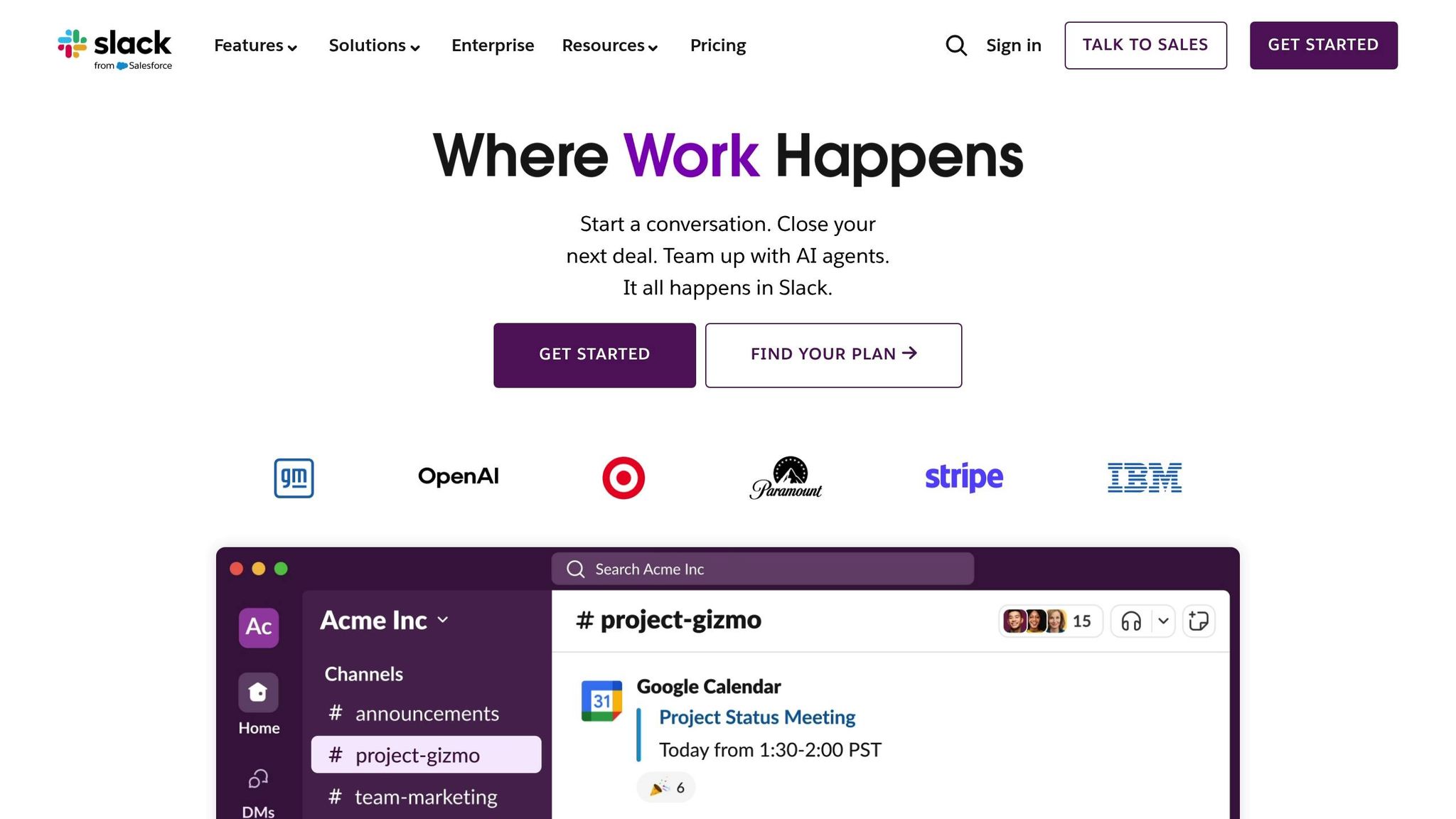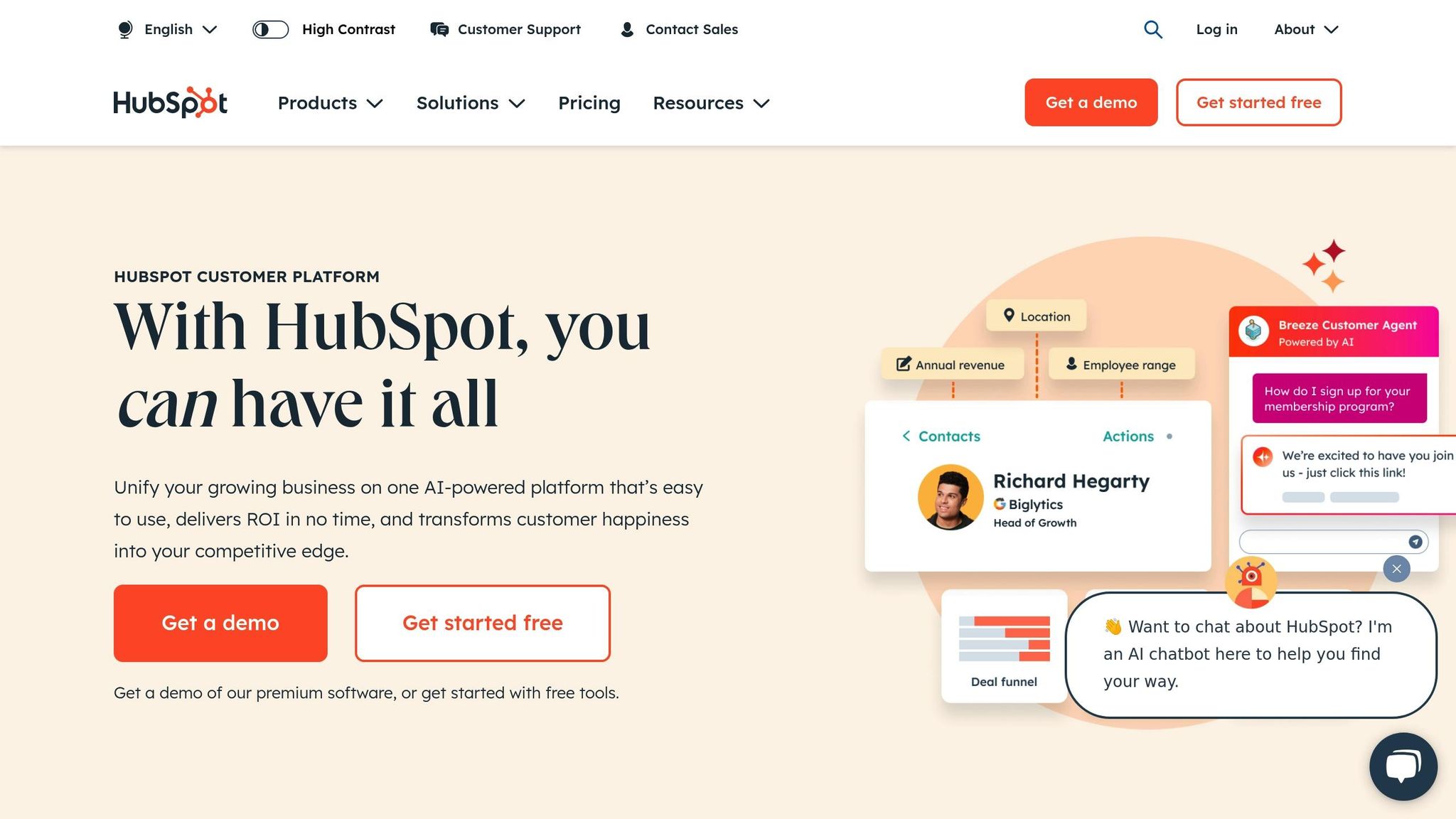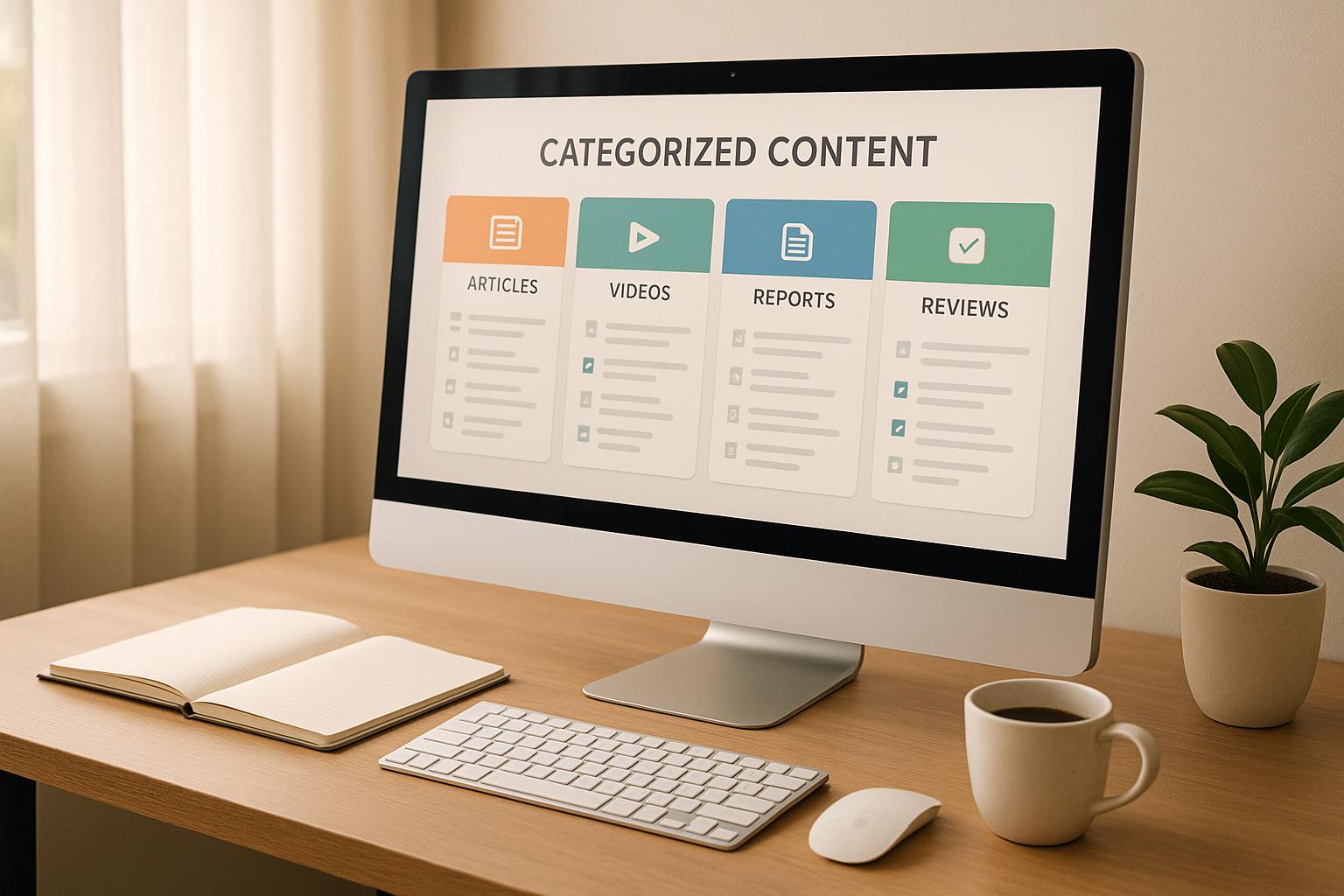Freemium models are a powerful way for B2B SaaS companies to attract users and grow revenue. The key is offering free tools that provide value while encouraging upgrades to paid tiers. Here's how successful companies make it work:
- Highlight Value Gaps: Clearly show the difference between free and premium plans.
- Spot Upgrade-Ready Users: Use data to identify users who are ready to pay, based on usage and engagement.
- Offer Premium Previews: Let users experience premium features in small doses to encourage upgrades.
Examples That Work:
- Slack: Limits message history and integrations in the free plan, converting 30% of users to paid tiers.
- Dropbox: Uses storage caps and referrals to drive upgrades with a 2.5% conversion rate.
- HubSpot: Caps free CRM features to encourage scaling businesses to pay.
Quick Tip: Timing matters. Don't introduce a paywall too early - let users first experience the value of your product.
Freemium isn't just about free tools; it's a strategy to build relationships, demonstrate value, and guide users toward paid plans.
Freemium as a Pricing Strategy is DISASTROUS (unless...)
Converting Free Users to Paid: Key Methods
Building on the introduction, let's explore the key strategies that help convert freemium users into paying customers.
Highlighting Value Between Tiers
Clearly defining the differences between free and premium tiers is critical for encouraging upgrades. A structured evaluation process significantly increases the chances of achieving a positive ROI on tools - companies that use one are 73% more likely to see success.
The Digital Marketing Association identified five common growth milestones where businesses often outgrow free tools:
- Contact volume: Free tools typically hit their limits with 2,500+ contacts (affecting 76% of users).
- Channel complexity: Managing more than three marketing channels becomes challenging.
- Team size: Teams with more than three marketing employees often need advanced features.
- Automation needs: Manual processes taking over 15 hours per week signal the need for upgrades.
- Reporting requirements: Advanced analytics and cross-channel attribution demand premium tools.
"Freemium is an incredible customer acquisition strategy when done correctly. The key is understanding which features are free and which are paid, and that balance changes over time."
- Des Traynor, Co-founder and Chief Strategy Officer at Intercom
HubSpot, for example, limits email sends, forms, chatflows, and analytics depth in its free tier, pushing users toward premium plans as their needs grow. Similarly, Mailchimp caps the number of contacts and email sends in its free plan, encouraging businesses to upgrade as they scale.
Once the differences between tiers are clear, the next step is identifying users who are ready to make the leap.
Recognizing Upgrade-Ready Users
Spotting users primed for an upgrade relies on analyzing their engagement and usage patterns. On average, freemium conversion rates range from 1% to 10%, though sales-assisted models often see higher rates of 10–15%, compared to 6–8% for self-service models.
Sked Social offers a great example of this in action. By introducing a gamified onboarding checklist with Userpilot, they achieved a threefold increase in conversion rates. Similarly, Attention Insights optimized its onboarding process and saw a 47% boost in activation rates.
Key behaviors that signal upgrade readiness include:
- High engagement levels
- Reaching the limits of the free tier
- Increased involvement from team members
- Growing workflow complexity
- Expanding storage needs
Offering Previews of Premium Features
Once you’ve identified users who are likely to upgrade, offering targeted previews of premium features can help seal the deal. Grammarly, for instance, allows users to try premium features three times a day, nudging them toward upgrading.
Asana takes a different approach by using in-app modals to highlight premium features during key workflows. Their strategy focuses on:
- Showing feature previews in relevant contexts
- Clearly explaining the benefits
- Providing additional resources for deeper understanding
- Using behavior-based targeting for precision
"Pricing isn't just about numbers. It's about the story you're telling and the value you're providing."
- Patrick Campbell
The advantages of premium tools are clear. Gartner's annual B2B Marketing Technology Benchmark Study found that paid enterprise tools deliver 41% higher lead conversion rates compared to free alternatives. This reinforces the importance of showcasing premium features during the decision-making process.
B2B SaaS Freemium Success Stories
Slack: Team-Based Growth

Slack's freemium model is a textbook example of how to drive team adoption. By offering a free tier packed with value, Slack encourages widespread use within teams. The results speak for themselves: a 30% conversion rate and a clear path to premium upgrades. Slack has identified that teams sending over 2,000 messages are far more likely to switch to paid plans. To nudge users toward upgrading, the free tier limits searchable message history and third-party integrations.
"The growth has been completely insane and almost entirely on word of mouth."
- Stewart Butterfield
By the end of 2014, Slack had already converted 73,000 users to paid plans, with 26% of its users opting for premium services.
Dropbox: Storage-Based Upgrades

Dropbox takes a different approach, leveraging storage limits and a referral program to encourage upgrades. With an impressive 700 million registered users, Dropbox manages a 2.5% conversion rate.
Here’s how Dropbox makes its freemium model work:
- Free storage that delivers immediate value
- Clear upgrade triggers tied to storage limits
- Referral rewards that incentivize growth
"When people refer others to sign up for Dropbox, the number of signups increased by 60%."
- Drew Houston
Dropbox’s pricing tiers are designed to cater to different user needs:
| Plan | Storage Capacity | Key Features |
|---|---|---|
| Free | 2GB | Basic file sharing |
| Plus | 2TB | Advanced sharing, priority support |
| Professional | 3TB | Advanced collaboration tools |
| Advanced | Unlimited | Custom solutions |
HubSpot: Tool-Based Conversion

HubSpot takes freemium success in another direction by offering a free CRM embedded with basic marketing, sales, and service tools. The strategy relies on usage caps to encourage upgrades. By delivering value upfront, HubSpot ensures users see the benefits of premium features.
Key tactics include:
- Providing basic versions of essential tools
- Limiting the number of contacts users can add
- Restricting access to advanced tool suites
"The easiest way to get 1 million people paying is to get 1 billion people using."
- Phil Libin, CEO of Evernote
sbb-itb-01010c0
Common Freemium Mistakes to Avoid
Early Paywall Timing
When Codecademy introduced monetization in 2015, four years after its 2011 launch, it demonstrated a key lesson for freemium models: timing matters. Implementing a paywall too soon - before users experience the product's "a-ha" moment - can hurt both adoption and conversion rates. To build trust and encourage upgrades, ensure the free tier offers meaningful value. Save the most advanced tools and features for premium plans, but let users first experience enough value to see why upgrading is worth it.
Enterprise Tier Gaps
Another common misstep is creating a disconnect between free offerings and enterprise solutions. Many B2B companies struggle with this, often due to stark differences in pricing, features, or support. These gaps can make it unclear how users should transition from free to enterprise plans. A better approach? Introduce intermediate offerings that act as stepping stones, making the upgrade path smoother and more aligned with evolving customer needs.
Missing Social Proof
Social proof plays a pivotal role in driving conversions. With 92% of people trusting peer recommendations, showcasing success stories, testimonials, and metrics can make a significant difference. Highlighting customer ROI, industry-specific examples, and case studies builds credibility and reduces buyer hesitation.
"Social proof is one of the best ways to eliminate skepticism from your prospective buyers." – Logan Mallory, Force for Good | Vice President of Marketing | Keynote Speaker | CMO Next
Retention also benefits from social proof. Research shows that companies with stronger customer retention grow revenue 2.5 times faster than their competitors. This makes leveraging social proof not just a strategy for acquiring new customers but also a tool for keeping them engaged long-term.
New Approaches in B2B Freemium
Pay-Per-Use Models
Usage-based pricing is proving to be a game-changer, driving 29.9% annual revenue growth, compared to the 21.7% industry average. Even better, 80% of B2B customers report that this pricing model aligns more closely with the value they perceive. Take Snowflake, for example - its pricing revolves around data storage and computing resources, offering tiers like standard, enterprise, and business-critical plans. Similarly, Twilio blends pay-as-you-go pricing with volume discounts and committed-use options, making it easy for users to scale up through SMS volume-based pricing. On top of that, personalized plan recommendations can nudge users toward upgrades even more effectively.
Smart Plan Matching
AI is stepping in to meet the 73% of B2B buyers who now expect personalized experiences. AI-driven plan matching has led to conversion rate boosts of up to 200%. By analyzing factors like feature usage, resource consumption, team size, integration needs, and growth potential, businesses can tailor premium offerings to users' specific needs. This kind of precision strengthens earlier conversion strategies, making premium upgrades feel like a natural fit.
Platform Integration Benefits
Tailored pricing and smart recommendations are powerful, but seamless integrations can be the final push toward a premium upgrade. Integrated marketing stacks, for example, deliver 23% higher campaign effectiveness. One IT company saw impressive results after integrating premium marketing automation with its CRM: lead generation jumped 143%, conversion rates climbed from 6.8% to 11.3%, and ROI hit 341% in just one year.
Squarespace takes a similar approach by limiting commerce integrations to its Advanced plan, encouraging businesses to upgrade as their needs expand. The numbers back this up too - 92% of premium marketing tools offer standardized API interfaces, compared to just 37% of free tools.
Next Steps and Implementation
To move users from freemium to premium, focus on actionable strategies that make the transition seamless and enticing. Here’s how you can put these ideas into practice:
A Framework That Works
1. Track Key Usage Metrics
Pay close attention to engagement signals that suggest a user might be ready to upgrade. Research shows that highly engaged users are 2.5 times more likely to convert into paying customers. Keep an eye on metrics like:
- How often specific features are used
- Levels of resource consumption
- Collaboration trends within teams
- Integration needs with other tools
2. Smooth Out the Conversion Path
Design moments where users naturally encounter premium features. For instance, ClickUp highlights premium tools in its navigation menu and uses targeted prompts when users try to access them. To make these moments effective, include:
- Clear statements about the benefits of upgrading
- Dual calls-to-action (e.g., “Learn More” and “Upgrade Now”)
- Money-back guarantees for reassurance
- Previews of what premium features can do
3. Use Smart Engagement Triggers
Leverage contextual prompts to nudge users toward premium features. For example, Pendo offers demo opportunities based on user behavior, ensuring the timing feels relevant and natural.
Proven Tactics That Drive Results
These strategies encourage users to upgrade by creating urgency and showcasing value:
| Tactic | Example | Impact |
|---|---|---|
| Time-Limited Access | Loom’s 5-minute video cap | Encourages quick upgrade decisions |
| Resource Caps | Miro’s limit on boards | Builds momentum for moving to premium |
| Feature Previews | Grammarly’s error detection | Helped grow daily users from 1M to 30M |
FAQs
How can B2B SaaS companies spot users who are ready to upgrade from a freemium plan?
To identify which users are ready to move from a freemium plan to a paid one, B2B SaaS companies should track key engagement metrics like how often users log in, whether they're using premium features, and their overall activity levels. These insights help spot "power users" who are more likely to see value in upgrading.
Here are a few effective strategies to encourage upgrades:
- Segment users by their usage habits to focus on those who are highly engaged.
- Use in-app prompts or notifications to showcase the benefits of upgrading.
- Provide personalized incentives like discounts or exclusive features to make the upgrade more appealing.
By studying user behavior and customizing the upsell process, companies can turn freemium users into dedicated, paying customers. For freemium models, conversion rates typically fall between 1% and 10%, depending on how well the strategy is executed.
What are some common mistakes businesses make with freemium models, and how can they avoid them?
One mistake businesses often make with freemium models is offering too little in the free version. When users don’t see enough value, they’re unlikely to stay engaged or consider upgrading. On the flip side, giving away too much can leave users with no reason to pay for premium features. The challenge lies in finding the right balance.
Another common pitfall is overlooking the user experience. If the product feels clunky or difficult to use, free users may abandon it before exploring its potential. To address this, businesses should focus on creating an easy onboarding process, clearly communicating the product’s benefits, and offering responsive customer support to answer questions quickly.
The free version should showcase the product’s key strengths, giving users a taste of its potential while reserving advanced features for premium plans. This setup not only highlights value but also encourages upgrades naturally. By thoughtfully designing the free tier and prioritizing a positive user experience, businesses can improve both retention and conversions.
How do premium feature previews boost conversions in freemium models?
Premium feature previews are a powerful way to boost conversions. They allow users to experience the perks of upgrading firsthand, showcasing exclusive tools or functionalities that can elevate their experience or productivity. This sneak peek can create a sense of urgency and added value, nudging users toward a premium plan.
The timing of these previews matters a lot. Showing them when users are actively engaged or at a point where premium features would solve a problem can make all the difference. On top of that, limiting access to certain features until users upgrade acts as a strong incentive to transition from a free plan to a paid one.


